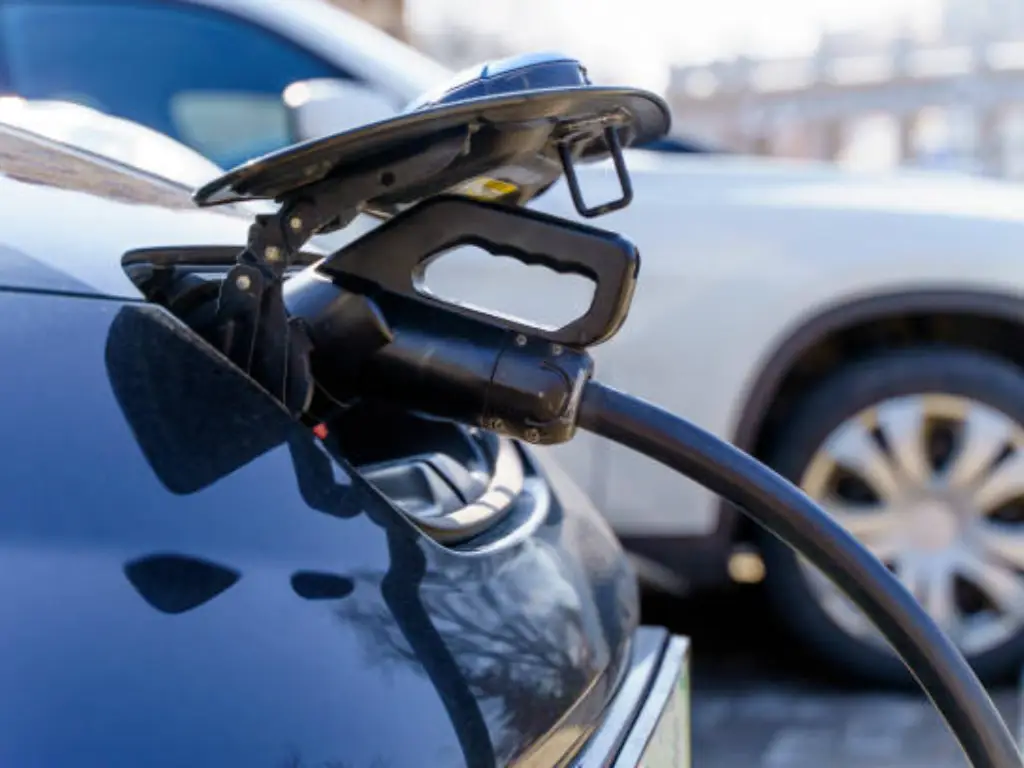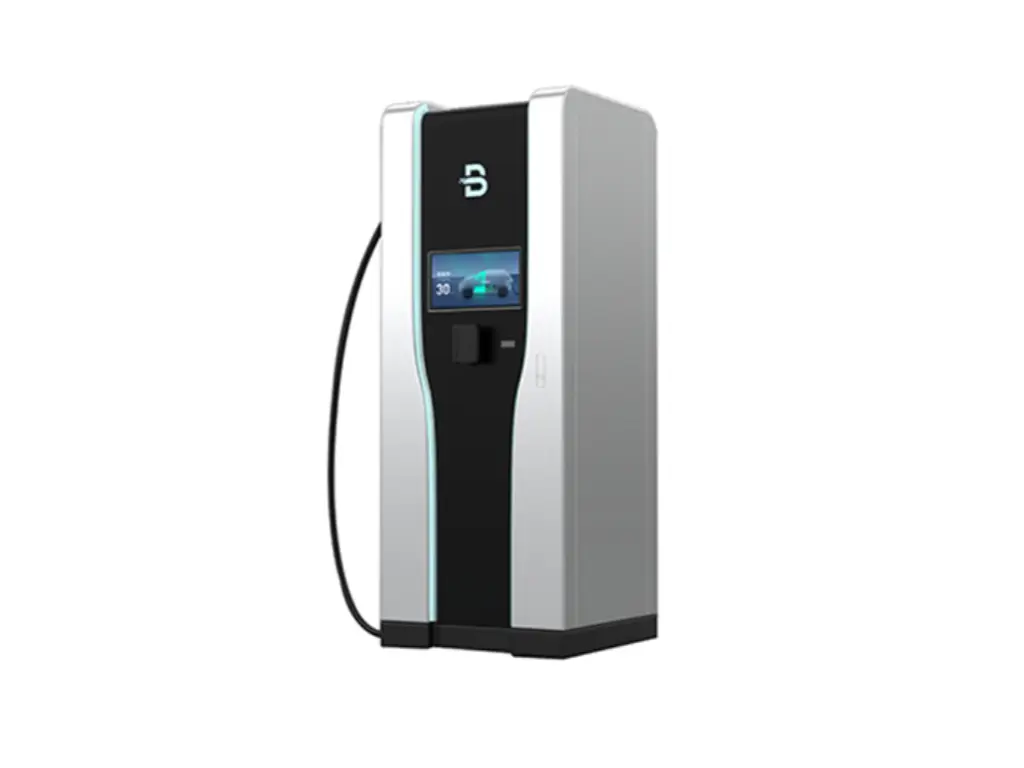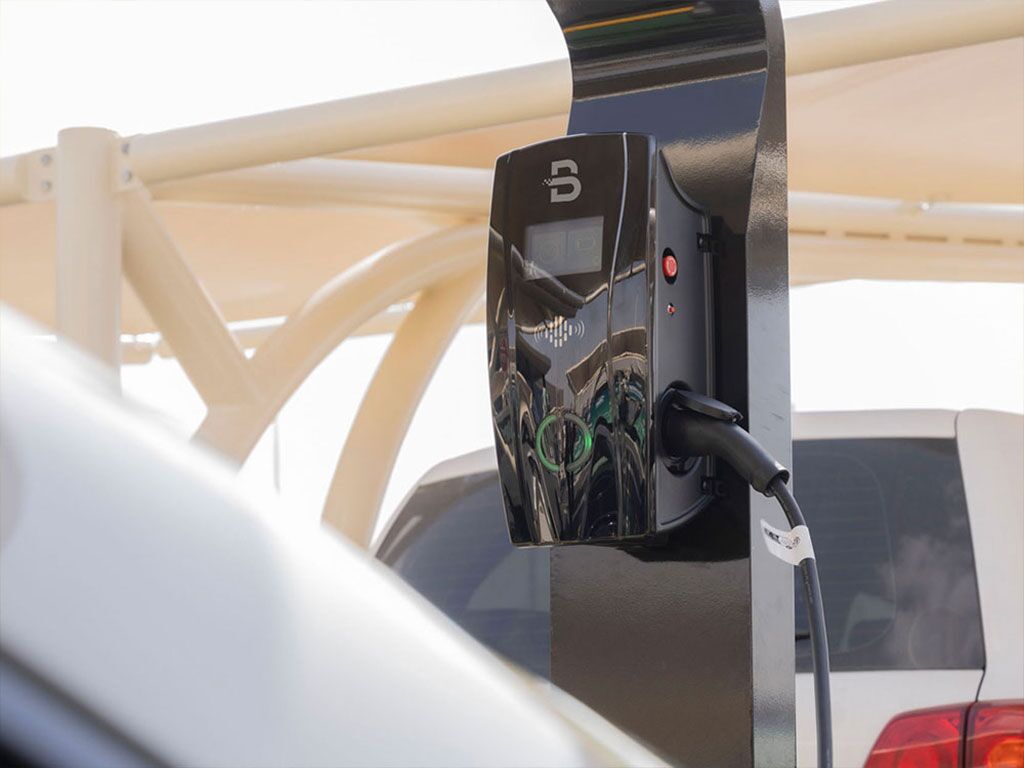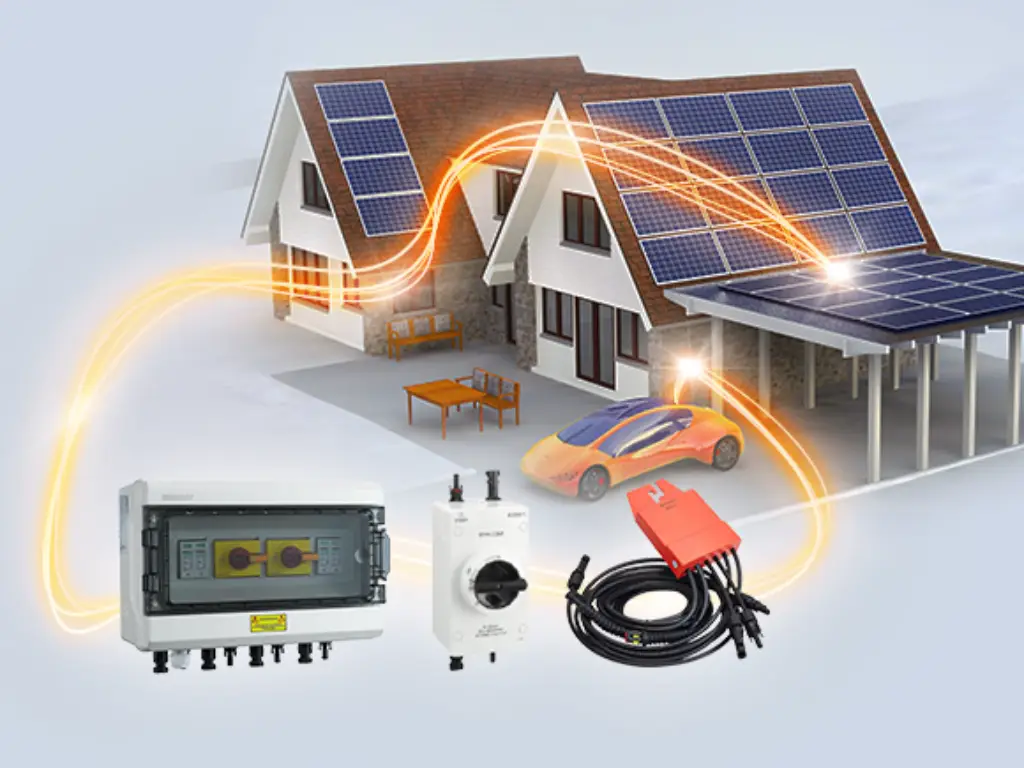Introduction
The electric car is a paradigm shift in personal transportation, a silent revolution that will liberate transportation from the century-old bondage of the fossil fuel pump. However, despite all its technological advancements, the EV revolution has been plagued by one, nagging question: ”How long does it take to ‘refuel’?” The ghost of time wasted waiting on a battery to charge has been the biggest obstacle to many. This is where DC fast charging comes into the picture. It is not just a step up, it is the game changer, the technology that reduces charging times that are measured in hours to minutes and makes long-distance electric travel a viable option. This guide will tell you all you need to know about this revolutionary technology.

Understanding the Levels of EV Charging
Before getting into the nitty-gritty of DC fast charging, it is important to realize that not every EV charging is equal. Charging is categorized into three levels, or tiers, by the industry based on power output and common application.
- Level 1 Charging: This is the simplest type of charging and it uses a normal 120-volt household wall socket. It does not need any special installation; the charging cord that usually accompanies an EV can be just inserted into any grounded socket. The speed is the trade-off for this convenience. Level 1 charging is very slow, usually only adding 3 to 5 miles per hour. It is most appropriate to plug-in hybrids with small batteries or for the owners of EVs who drive very little and can leave their car plugged in for days at a time.
- Level 2 Charging: Level 2 is the most popular form of charging that is used in homes and other places where people gather such as workplaces, shopping centers, and parking lots. It is 240 volts, like an electric clothes dryer or oven, and needs a dedicated charging station professionally installed. A Level 2 charger has a range of 25 to 40 miles per hour, so it is more than sufficient to charge most EVs overnight. It is the workhorse of the EV ecosystem, and it does the lion’s share of the daily charging.
- Level 3 Charging (DC Fast Charging): This is the top level and the one we are going to discuss. Level 3 is only referred to as DC Fast Charging or direct current fast charging. It works at very high voltages (400V to more than 900V) and delivers a flood of high power capable of charging a vehicle’s battery to 80 percent in 20 to 40 minutes. These chargers are costly, complicated infrastructure and are nearly all located along major highways and in special-purpose charging centers, with the main use case being long-distance travel.
What Is DC Fast Charging and How Does It Work?
DC fast charging is so fast because of a key difference in the way it transfers energy to the vehicle’s battery pack. To comprehend this, it is necessary to first comprehend a fundamental electrical concept: the electric power grid supplies alternating current (AC), whereas electric vehicle batteries, as with all batteries, store power as direct current (DC).
Under Level 1 and Level 2 charging, the vehicle itself does the conversion of the AC power on the grid into DC power that the battery can accept. A component within the car known as an onboard charger (OBC) does this conversion. The OBC is limited in size, weight and its capacity to handle heat, which essentially limits the rate at which it can carry out this conversion. Regardless of how strong the Level 2 station is, the charging speed is eventually limited by the onboard charger of the car itself, which is usually limited to 7 kW to 19 kW.
DC fast charging operates by totally avoiding this bottleneck. The charging station itself is a huge device that has its own powerful AC-to-DC converters. Rather than transmitting AC power to the car, the station carries out the conversion outside the car and feeds a high-voltage stream of DC power directly into the battery management system (BMS) of the vehicle. DC fast chargers do not have the size and weight limitations of an onboard charger, and thus can provide significantly more power —often 10 to 20 times asmuch power as a Level 2 system— charge at dramatically faster rates by moving the conversion process out of the vehicle.
The Core Difference: DC vs. AC Charging Explained
Although both approaches have the same final objective, which is to recharge the battery of an EV, the processes and the applications are incomparable. These fundamental differences are important to know when using an EV.
- Place of Power Conversion: This is the main difference. In AC charging, the AC-to-DC conversion occurs within the vehicle, and is constrained by the onboard charger. DC fast charging converts the power within the large charging station, so it can be much higher.
- Charging Speed: The difference is one of magnitude. AC charging is in hours; a full charge usually takes between 6 and 12 hours. DC fast charging is expressed in minutes; a charging session to 80 percent capacity typically takes 20 to 60 minutes.
- Primary Use Case: AC charging is intended to be used during the so-called dwelling time, when the car is parked most of the time, e.g., overnight at home or during a full workday at the office. DC fast charging is intended to be used to refuel on the move, mainly to enable long-distance travel beyond one charge.
- Infrastructure and Cost: AC charging stations (Level 2) are fairly easy, small and cheap to install in a residential or commercial location. DC fast charging stations are industrial-level, complicated equipment that are much more costly to buy and install, and frequently necessitate major upgrades to the local electrical grid.
Getting into the DC Fast Charging Details: Speed, Connectors, and Cost

After learning the principles, the practical use of DC fast charging has three main variables: the speed at which you can charge, the type of plug you can use, and the cost.
How Fast Is DC Fast Charging
The charge speed of a DC fast charging session is not a fixed value, but a dynamic process that depends on a number of factors. The maximum power output of the charger is the headline figure and is measured in kilowatts (kW). Typical levels are:
- 50 kW: An older and still widespread standard, which can add approximately 100 miles of range within 40-50 minutes.
- 150 kW: A common contemporary standard, which can often add 150 miles or more in approximately 30 minutes.
- 350+ kW: “Ultra-fast” chargers, which with a technologically advanced EV can charge 200 miles in less than 20 minutes.
But the car will not charge any faster than the charger or the car itself will permit, whichever is slower. A vehicle that can only charge at 100 kW will not charge any quicker at a 350 kW charger. Moreover, each charging cycle has a fast charging curve. Similar to the filling of a stadium with people, the process is quick in the initial stages when there are no people in the seats, but it becomes slow as it becomes full to control the flow. An EV battery will charge at its highest rates at about 10 to 80 percent state of charge. Once the battery management system reaches 80%, the charging rate is reduced drastically to ensure that the battery cells are not overheated and damaged. That is why the majority of EV drivers on a road trip charge 80% and proceed with their journey, since the last 20 percent may take twice as long to charge.
Connector Types
The EV industry has suffered a standards war over fast charging connectors for several years, but by 2025, the industry will have mostly converged in North America and Europe.
- CCS (Combined Charging System): This has been the standard in North America (CCS1) and Europe (CCS2) by almost all non-Tesla automakers. The plug is ingenious in that it has a normal AC plug with two large DC pins underneath, so it can accept both types of charging in the same port.
- NACS (North American Charging Standard): The proprietary connector of Tesla vehicles like the Tesla Model S has now become the new North American standard. In a historic change of industry beginning in 2023, almost all major automakers, such as Ford, General Motors, Honda, and Hyundai, declared that they would switch to the NACS port on their cars beginning in 2025. The NACS plug is significantly smaller and lighter than CCS and is now ready to dominate the market.
- CHAdeMO: This standard was developed in Japan by the CHAdeMO association and was mostly adopted by the Nissan Leaf and some other Japanese cars. Although millions of vehicles with CHAdeMO connectors are already in use, the standard is being replaced in new cars sold in North America and Europe, and new charging points do not often support this connector.
Besides these, it is also worth mentioning other significant international standards, including GB/T, the national standard applied in the whole of China.
The Costs of Using DC Fast Charging
Fast is expensive. DC fast charging is by far the most costly method of charging an electric vehicle. Although the price depends on the network, region, and even time of day, drivers can anticipate paying between 0.40 and 0.70 per kilowatt-hour (kWh). At these prices, 200 miles of range may cost between 25 and 45 dollars. This is usually still less expensive than the same amount of gasoline, but three to five times the cost of charging at home on off-peak residential electricity rates. The majority of charging networks charge per kWh, which is the fairest way to charge, although some still charge per minute, which can be disadvantageous to vehicles with a slower charging rate.
Pros and Cons of DC Fast Charging
Like any technology, DC fast charging has clear advantages and notable drawbacks.
| Pros | Cons |
| Unparalleled Speed – Adds hundreds of miles of range within an hour | High Cost – More expensive than home or workplace Level 2 AC charging |
| Enables Long-Distance Travel – Makes cross-country road trips feasible and convenient | Potential Battery Degradation – Frequent fast charging can stress the battery and shorten its lifespan |
| Reduces Range Anxiety – A strong charging network provides peace of mind | Station Reliability Issues – Chargers may be broken or “derated” (slower than advertised) |
| Expanding EV Charging Network – Government and private investment are rapidly increasing coverage | Inconsistent Speeds – Performance varies by vehicle, battery temperature, and power sharing |
While DC fast charging gives drivers freedom from range anxiety, for businesses, it represents a major opportunity to drive traffic and revenue.
For Businesses: Benefits and Key Factors for DC Fast Charger Deployment
For commercial entities, installing DC fast chargers is evolving from a novelty to a strategic necessity. The benefits are multifaceted, offering a compelling return on investment for retail at public locations, commercial entities, and fleet-based businesses:
- Increase Customer Traffic & Sales: Attract high-value EV drivers who stay longer.
- Create New Revenue Streams: Generate direct income from charging fees.
- Boost Your Green Credentials: Showcase your commitment to sustainability.
However, the long-term success of a charging operation hinges on choosing the right equipment that is engineered not just for speed, but for sustained business performance and can withstand the rigors of public use.
At BENY, our DC fast charging solutions are designed with a focus on the key factors essential for successful commercial deployment:
- Intelligent Energy Management & Cost Reduction: Our proprietary EVsaas platform (OCPP 1.6J) and Dynamic Load Balancing technology optimize power usage to reduce operational costs. We also offer innovative DC chargers with integrated energy storage, allowing you to solve grid capacity issues and lower electricity bills by using stored off-peak energy for peak-time charging.
- Full Customization for Your Brand: We provide solutions tailored to any market, supporting all global connector standards including NACS, CCS, CHAdeMO, and GB/T. To align with your corporate identity, we also offer complete brand customization for the charger’s appearance, including your logo and colors.
- Certified Global Safety and Compliance: Our commitment to safety is verified through a comprehensive suite of the world’s most stringent certifications, including UL, CE, TUV, and UKCA. This ensures our platform protects users and property, guaranteeing a secure and compliant investment for any global market.
Ready to discuss a DC fast charging solution tailored to your business needs? Contact the BENY expert team today for a free consultation.
The Future of DC Fast Charging: Trends and Innovations to Expect
DC fast charging technology is developing very fast. The chargers installed today are already a huge step forward compared to those installed a few years ago, and the next decade will bring even more revolutionary changes.
- Megawatt Charging: A new standard, the Megawatt Charging System (MCS), is under development to charge heavy-duty electric semi-trucks with more than 1,000 kW (1 megawatt) of power, allowing them to recharge during the time it takes a driver to take a mandatory break.
- Vehicle-to-Grid (V2G): DC chargers are bidirectional in nature. The next generation V2G technology will enable parked EVs to become a huge, distributed battery, exporting power to the electric grid at peak times to stabilize it, and pay the vehicle owner money.
- Better User Experience: The introduction of the so-called Plug & Charge (ISO 15118) technology is automating the payment process. A driver just plugs in and the car safely talks to the charger to do authentication and billing automatically, no apps or credit cards required.
- Smart Infrastructure: Charging hubs of the future will be combined with on-site battery storage and solar generation to minimize their effect on the grid and cut the cost of electricity, making charging more reliable and affordable. Such a model of “solar + storage + fast charge” is already being pioneered in advanced solutions. BENY’s DC fast chargers with integrated energy storage, for example, act as self-contained power hubs. Enabling high-power charging in locations with limited grid access while significantly lowering operational costs through intelligent peak-shaving, reduce operational costs via peak-shaving, and can even serve as backup power during an outage.

Final Thoughts
DC fast charging is more than just a convenience; it is the linchpin of the electric vehicle transition. It is the technology that solves the crucial challenge of long-distance travel, effectively eliminating the final, practical advantage held by the internal combustion engine. While home and workplace AC charging will remain the backbone of daily EV life, it is the ever-expanding network of powerful DC charging fast chargers along our highways that provides the freedom and confidence for drivers to go anywhere. As this infrastructure of public charging stations matures and the technology behind each electric car charger continues to advance, the open road will truly, and finally, be fully electrified.











